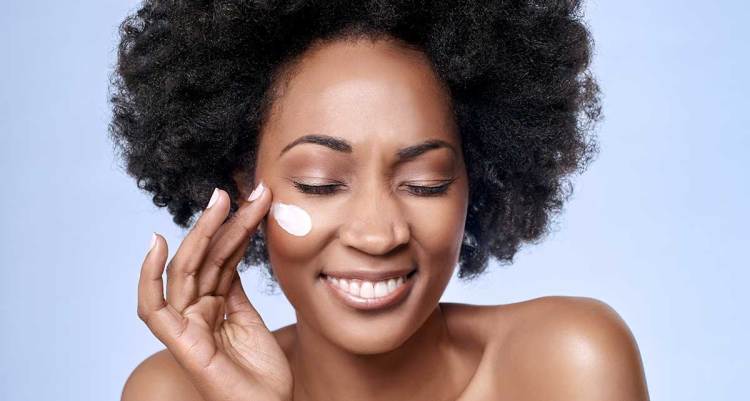Watch all the Transform 2020 sessions on-demand here.
Olay, the popular skin care brand, started using AI to make recommendations to its millions of users almost two years ago, and says it has doubled the company’s sales conversion rate overall.
It’s just the latest retail company that has turned to AI to boost its engagement with users to increase its top line. The traction confirms surveys that show an increasing number of businesses are putting AI investments at the head of their agenda.
True, Olay has an advantage over most companies. The billion-dollar brand is owned by giant Procter & Gamble, and has been using AI in its core product for some time. It has 25 years of expertise in image recognition, which helps it identify skin problems and improvement areas for its users.
In 2016, with renewed excitement growing around the potential of AI in marketing products, Olay leveraged the technology in a new marketing push, launching the Olay Skin Advisor, an online tool that gives women an accurate skin-age estimate and recommendations for care.
June 5th: The AI Audit in NYC
Join us next week in NYC to engage with top executive leaders, delving into strategies for auditing AI models to ensure fairness, optimal performance, and ethical compliance across diverse organizations. Secure your attendance for this exclusive invite-only event.
The product is based on a single selfie, and leverages Olay’s image expertise. Skin Advisor offers up a personalized product regimen, taking into account problem areas it sees, as well as what the user tells it they are most concerned about (wrinkles, crow’s feet, dry skin, etc.).
It incorporates an AI-powered matching engine built by Nara Logics, a Boston company that specializes in content matching and also serves the CIA, among others. Its technology decides exactly which of Olay’s 100 or so products to recommend, and in what combinations.
We talked with the CEO of Nara Logics, Jana Eggers (see video below), about how Olay doubled its conversion rate with the Skin Advisor product, which now has engaged more than four million customers. Skin Advisor also increased the average basket size, for example increasing it by 40 percent in China alone, and cut the bounce rate of visitors to a third of what it was previously. While P&G doesn’t break out Olay results in its earnings, it recently cited demand for Olay products as a reason for exceeding expected sales.
It’s one of the series of cases we’ve been writing about in the run-up to our Transform event on August 21-22, where we are showcasing real examples of companies using AI to drive their business results. Our motto for the event has become “You can do it too!,” because it’s not just the big tech companies — Google, Amazon, Facebook — that can use AI.
Here are my six take-aways from the interview:
- AI approaches are customized per industry. Nara Logics uses the same machine learning algorithm for Olay as it does for the U.S. government’s intelligence community. But it generates unique “knowledge graphs” for each industry. For Olay, the algorithm accommodates two requirements: First, rules track individual product features and ingredients, to ensure they’re matched to customers’ focus areas and complement each other when offered in suites. Second, it gauges what products are popular, from reviews, transactions and other sources: Moisturizers may be healthy, but women like light hydration moisturizers, not sticky ones. This incorporates a collaborative filtering approach similar to the recommendations from Amazon or Netflix.
- You don’t have to hire Ph.D.s. Eggers says that while the giant AI-platform companies like Google, Amazon, and Microsoft are hiring data science Ph.D.s, most companies don’t have to hire these expensive employees. “Hire some great software engineers,” she says, and they’ll be excited about using these technologies.
- Neural nets may be hyped, but they’re still useful. Eggers agrees that neural nets, a deep learning approach, had become overhyped last year. She says she’s seeing more balance now; some companies are moving away from that hype. That said, Nara Logics does use neural nets for collaborative filtering analysis or natural language processing. It also uses proprietary algorithms to filter out noise.
- Retail, financial, and B2B sectors are ripe for AI. Eggers sees the retail and financial industries are moving quickly to adopt AI. She’s also seeing a lot of traction at B2B companies. These companies have discovered they’re not selling their services to other companies so much as they are selling them to individuals within those companies. This requires AI that makes recommendations based on what those people need in their specific roles.
- It’s all about personalization. Skin Advisor serves recommendations to tens of thousands of people very week, and yet 94 percent of users receive recommendations unique to them — meaning no one else has received the same recommendation.
- Men: Use it inside, or shave or something. Not sure if it was a bug or not, but when I first tried Skin Advisor, I was sitting outside, and it thought I was 59. I’m only 51. A couple of hours later, I tried it indoors, and it guessed 51. Bingo. (Later, I was told Skin Advisor doesn’t like men’s facial hair, so maybe that was it.)
This is just part of the story. Join us at Transform (ticket link here) where Jana Eggers sits down with Procter & Gamble’s Christi Putman, R&D Associate Director & Damon Frost, CIO-Beauty to hear more about how Olay is harnessing the power of AI.”
Thanks to all of our sponsors whose support makes Transform possible: Samsung, Worldpay, IBM, Helpshift, PullString, Yva, TiE Inflect and Alegion.


